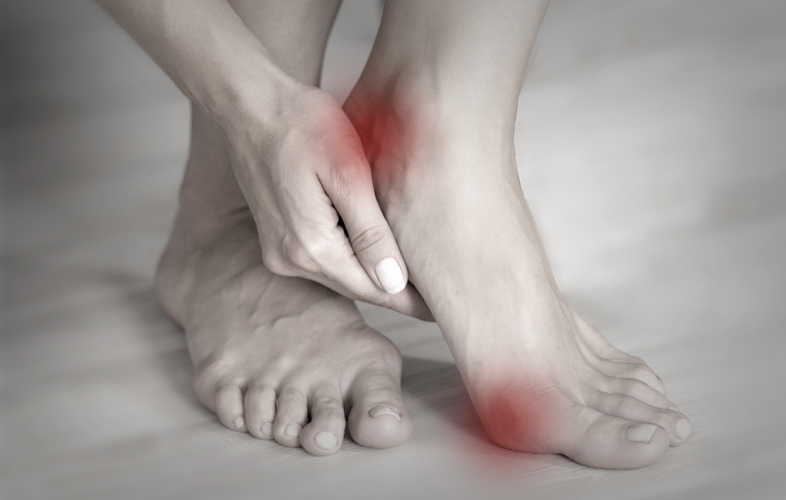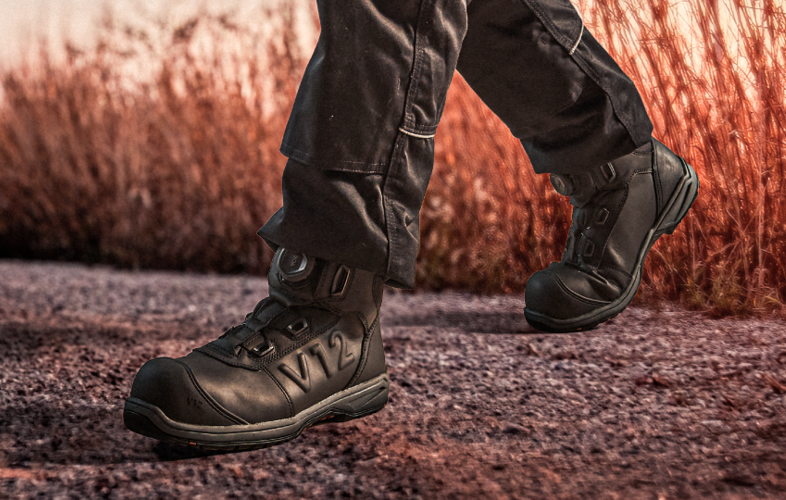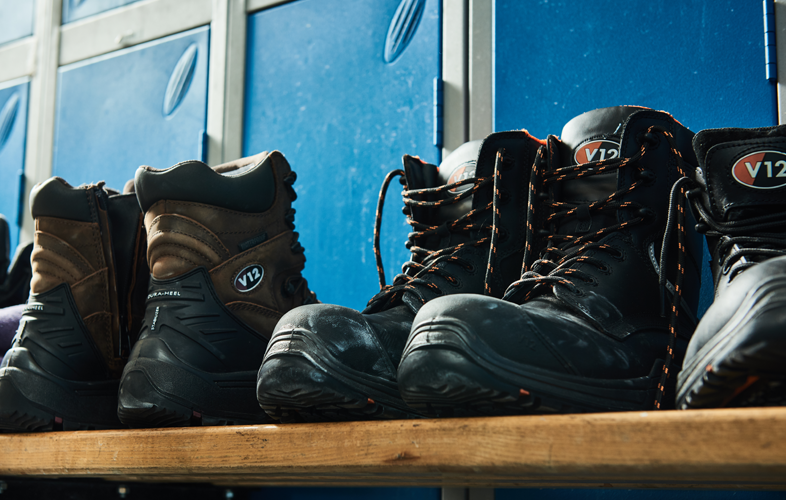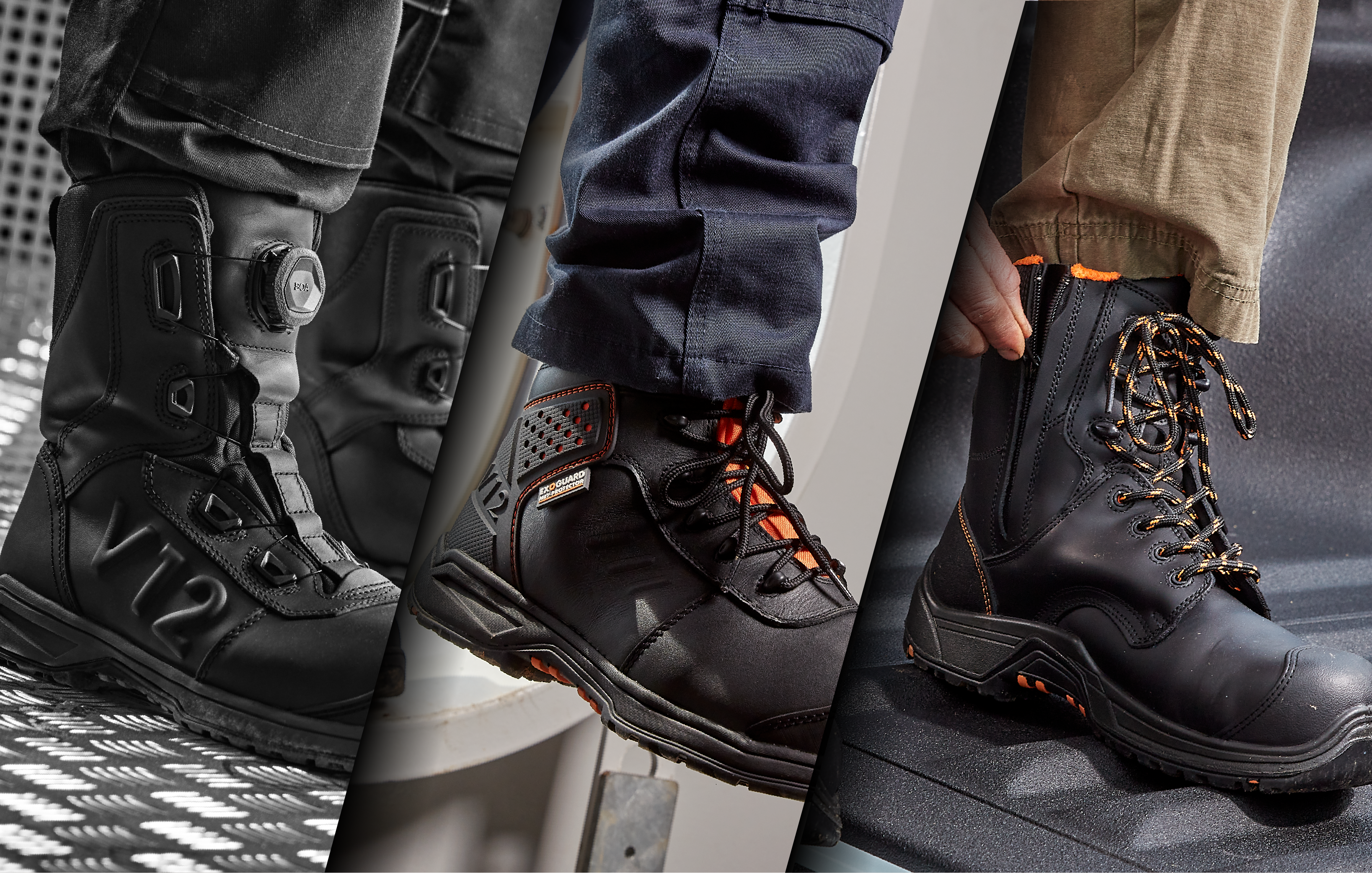Blisters are one of those things which most people have experienced at some point – and if you are one of these unlucky people, you’ll know they're a foot health complaint that can range from slightly irritating to extremely painful.
In this blog, we’ll give you key information on two main stages – prevention and cure. If you want to avoid blisters, we’ve got all the guidance you need, but if you’re already suffering from one and want to know how to treat it, put your feet up and let us help.
WHAT IS A BLISTER?
A blister is a small and painful pocket or ‘bubble’ of fluid that sits between the layers of the skin. They are caused when something – often shoes that are too tight – rub repeatedly against parts of the body, usually the feet and hands.
SHORT-TERM EFFECTS OF BLISTERS
In the short term, blisters can:
- Be extremely painful
- Become itchy and hot
- Have a significant effect on your productivity at work
Afterall, the average tradesman walks 12,000 steps per day, but if you work in agriculture, grounds maintenance or waste collection, you can rack up 14,000 steps a day – which is 7 miles. And spare a thought for warehouse pickers the next time you order something online – they can take up to 22,000 steps per shift. That’s over 10 miles per day. Imagine doing all those steps with a painful blister.
MORE SERIOUS IMPACTS OF BLISTERS
An unaddressed blister can easily become infected which could lead to more complicated issues like bacterial skin infections and cellulitis.
When foot pain is present, often we avoid putting pressure on that area by putting the weight on another area (which is why people limp when they have an injury). But do this for too long, because you’ve changed your gait and a new part of the body starts to take weight it’s not supposed to, this can mean pain flaring up in places much further up your lower limbs like knees, legs and hips.
PART 1: PREVENTING BLISTERS
WELL-FITTING FOOTWEAR IS KEY
Blisters on the feet are ultimately caused by rubbing, so well designed and well made footwear is the best way to reduce this friction.
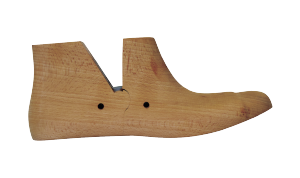 All V12 boots and shoes are built on our unique last which was made using data from combining the scans of over 4,000 global feet shapes. Having a last which reflects the foot shapes of people from across the world means wearers get a more universal and comfortable fit. Many of our wearers remark that V12 footwear feels wider compared to other safety brands. This is because most footwear is made in China and so is based on a narrower last, as people from this country tend to have narrower feet. Because V12 footwear is naturally wider, the chances of pinching and blistering is much less.
All V12 boots and shoes are built on our unique last which was made using data from combining the scans of over 4,000 global feet shapes. Having a last which reflects the foot shapes of people from across the world means wearers get a more universal and comfortable fit. Many of our wearers remark that V12 footwear feels wider compared to other safety brands. This is because most footwear is made in China and so is based on a narrower last, as people from this country tend to have narrower feet. Because V12 footwear is naturally wider, the chances of pinching and blistering is much less.
BACK PART MOULDING
Back part moulding is a procedure in the shoe making process. While the last is inside the upper, a heated mould in a heel shape is clamped around the heel area. Using pressure and heat, the leather and heel counter stiffener are moulded and set into the shape of the heel, giving it added structure and form.
Many footwear manufacturers don’t have a specific fitting back moulder. But V12 use a back part moulder specially designed to fit the contours of our last. So, with our last shape and because our back part moulder fits perfectly and isn’t just a generic shape, wearers get the best fit, reducing the chances of blistering dramatically.
THE RIGHT INSOLES CAN HELP
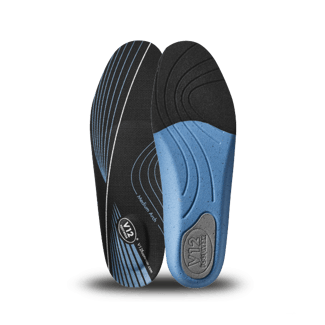 We developed the Dynamic ArchTM insole by collaborating with motion analysts and renowned podiatrists. These insoles are made with shock-absorbing and supportive material which eases pressure on pain points such as blisters.
We developed the Dynamic ArchTM insole by collaborating with motion analysts and renowned podiatrists. These insoles are made with shock-absorbing and supportive material which eases pressure on pain points such as blisters.
When developing Dynamic ArchTM, we also ensured their anti-static properties were incorporated within the material and not in the stitching, as is the case with many insoles. Removing this uncomfortable stitching under the ball of the foot is a way of ensuring the foot isn’t rubbed or chaffed and becomes vulnerable to blistering.
And for those living with diabetes, this is a benefit that goes far beyond foot health. Feet that rub on stitching sewn into the heel can cause blisters and wounds that can lead to infection: for a diabetic, that’s a serious risk. Why? Find out here.
IMPORTANCE OF WATERPROOFING
If you want to avoid blisters, keeping your feet dry is CRUCIAL. When feet get wet, they become softer (known as maceration) which means if they rub against footwear, the skin is weaker, and so more susceptible to blistering.
If you’re going to be exposed to heavy showers or walk through water for prolonged periods, a boot that isn’t waterproof – or even water-resistant - is going to let water into your boot, soften the skin and leave you more vulnerable to painful blistering.
Want more clarity on the difference between waterproof and water-resistant? Read this blog.
THE LESS SEAMS THE BETTER
The less seams in the lining of your footwear the better. Seams are an interruption in the material, and stitching can cause the type of friction that leads to blisters. So, when purchasing footwear, if possible, ask the manufacturer about how many seams are in the boots’ lining, because it could make a big difference in the long run.
PART 2 – TREATING BLISTERS
If you do end up with a blister, there’s no need to panic. There are several methods to help you get back on pain-free feet as soon as possible.
ZINC OXIDE TAPE
Used by many wearers including long-distance runners and those in the military, this tape is also commonly relied on to treat more serious wounds than blisters in medical circles.
Zinc Oxide’s adhesive backing is extremely sticky, so it will stay fixed to your skin, rather than end up at the bottom of your sock at the end of the day. Furthermore, this tape’s fabric is light and breathable, but designed to be rigid rather than stretchy, so you can apply it to blisters in hard-to-reach areas.
Zinc oxide is a chemical compound proven to accelerate regrowth of skin and soft tissue, so it will encourage the blister to heal faster too. Zinc oxide tape can also be used if you start to feel rubbing to ensure that the issue doesn’t progress to a blister.
SOCKS
![]()
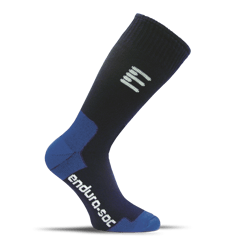 The right socks can play a big part in preventing blisters. A good general rule of thumb is that thicker socks give more protection against blistering - but you can also acquire socks designed with specific no-rub seams to reduce this risk even further.
The right socks can play a big part in preventing blisters. A good general rule of thumb is that thicker socks give more protection against blistering - but you can also acquire socks designed with specific no-rub seams to reduce this risk even further.
If you’re prone to blistering, wearers have found that double skin socks can be an effective solution to blisters. A good double-skinned sock will be constructed with two layers of material to absorb friction, which will also be a wicking fabric to remove perspiration and keep feet dry.
LACING
While it’s natural to think that blistering occurs because footwear is too tight, actually, they often happen when there is too much movement of the foot. In other words, the footwear is not tight enough. Have a look at our handy video on heel lock lacing - a clever footwear hack that helps reduce slipping and friction that causes blistering.
WE DON’T RECOMMEND ❌
We’ve given you a lot of advice about what you should do to prevent or avoid blisters, but sometimes it helps to know what you might consider avoiding.
PUTTING IN TWO INSOLES IN YOUR FOOTWEAR
Many think that when they’re dealing with foot pain, more cushioning means more comfort. But sometimes the reverse is true. Putting two insoles (or more) in footwear can be very painful because it pushes the foot higher up. This means it can start to rub on parts of the boot that it was previously flush with. And it only takes a few steps for a foot that was previously snug that’s now rubbing on a heel part or toe cap to blister.
SUBMERGE NEW BOOTS IN WATER
This method of softening boots to break them in emerged from the military. And while this technique might have been effective in this area, military boots were historically all leather, so this ‘softening’ technique - excuse the pun – holds more water in this line of work. But safety boots aren’t just leather – they feature materials like composite, steel and plastic to make toecaps, midsoles and membranes to name only a few components. Given this, submerging a safety boot in water could compromise its safety specification before they’ve taken their first step.
HAMMERING THE HEALS
We’ve heard some wearers recommend using a wooden mallet to hammer the heels of new boots to soften them and speed up the breaking in process. Well, we believe there are few scenarios in life where taking a brand-new product that’s designed to protect you and bashing it with a blunt instrument is a good idea. And this idea is no exception - and not one we’d recommend.
Ultimately, our view is that while feet may need some time to get used to new footwear, boots built on the right last, with the correct fit and appropriate comfort solutions shouldn’t really require breaking in techniques this extreme.
Interested in finding out more ways to improve your foot health? Become an expert in minutes by reading our helpful and easy to use whitepaper.

